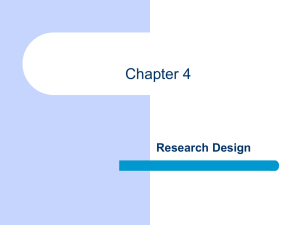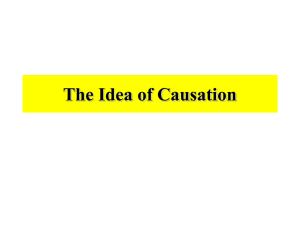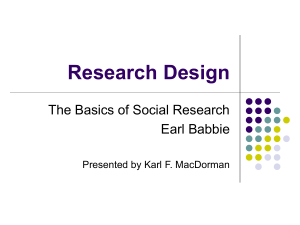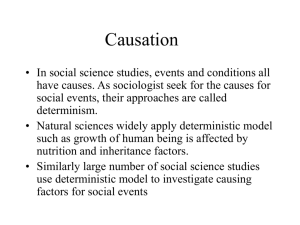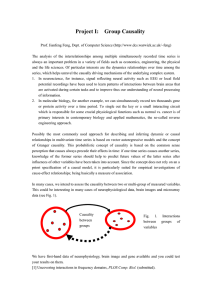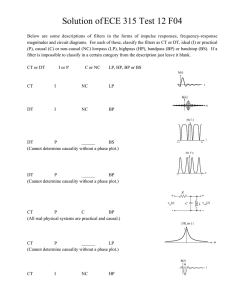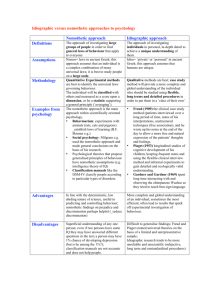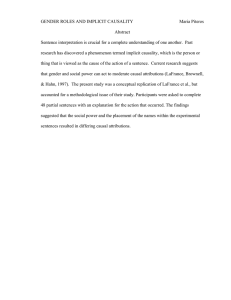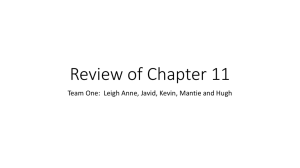Lecture 4
advertisement
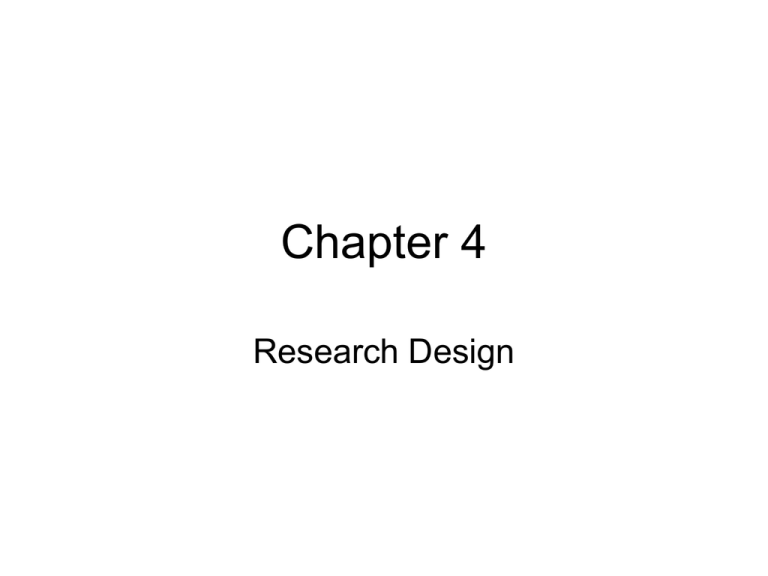
Chapter 4 Research Design Three Purposes of Research 1. Exploration 2. Description 3. Explanation Purpose of Exploratory Studies • Satisfy researcher’s curiosity and desire for better understanding. • Test the feasibility of undertaking a more extensive study. • Develop methods to be employed in a subsequent study. Purpose of Descriptive Studies • Observe and describe situations and events • Answer questions of what, where, when, and how • Examples: US Census, American Housing Survey, Unified Crime Reports Purpose of Explanatory Studies • Answer questions of why? • Test hypotheses and theories. Explaining a Political Phenomenon • Identifying causality • Not an easy thing to do • Multiple factors likely to influence an event or behavior • Approach my depend on approach – Idiographic – nomothetic Criteria for Nomothetic Causality 1. A statistical correlation between the two variables. 2. The cause takes place before the effect. 3. There is no third variable that can explain away the observed correlation as spurious. Remember • Research can determine some causes, but it cannot determine complete causation. • Exceptions do not disprove a causal relationship. • Causal relationships can be true even if they don’t apply in a majority of cases. Necessary & Sufficient Causes • Necessary cause - a condition that must be present for the effect to follow. • Sufficient cause - condition that if present, guarantees the effect in question. • Causes that are both necessary and sufficient are the most satisfying outcome in research. • Note – this is language used in the sciences, it is hard to find a necessary or sufficient cause in political science Units of Analysis What is a “Unit of Analysis”? What or whom to study: • Individuals • Groups • Organizations • Social artifacts Units of Analysis and Faulty Reasoning • Ecological fallacy – assuming something learned about an ecological unit says something about the individuals in the unit. • Reductionism – Reducing something to a simple explanation when in reality it is complex. Time Dimension • Cross-Sectional Studies • Longitudinal Studies – Trend – Cohort – Panel Example Year Approve abortion for any reason 1980 1985 1990 1994 2000 Yes 37.9% 38.0% 49.2% 51.7% 47.6% No 62.1% 62.0% 50.8% 48.3% 52.4% 100% 100% 100% 100% 100% (480) (481) (323) (331) (309) How to Design a Research Project 1. Define the purpose of your project. 2. Specify exact meanings for the concepts you want to study. 3. Choose a research method. 4. Decide how to measure the results. How to Design a Research Project 5. 6. 7. 8. 9. Decide whom or what to study. Collect empirical data.* Process the data.* Analyze the data.* Report your findings.* * We will not be collecting or analyzing data for the research paper, only identifying data sources and measures. Elements of a Research Proposal • • • • Problem or objective Literature review Subjects for study Measurement – How do you measure: • Corruption • Equality • Effectiveness Elements of a Research Proposal • • • • Data-collection methods Analysis Schedule Budget – For you research project imagine you have a limited budget Example • http://faculty.unlv.edu/kfernandez/articles/research-design.pdf
